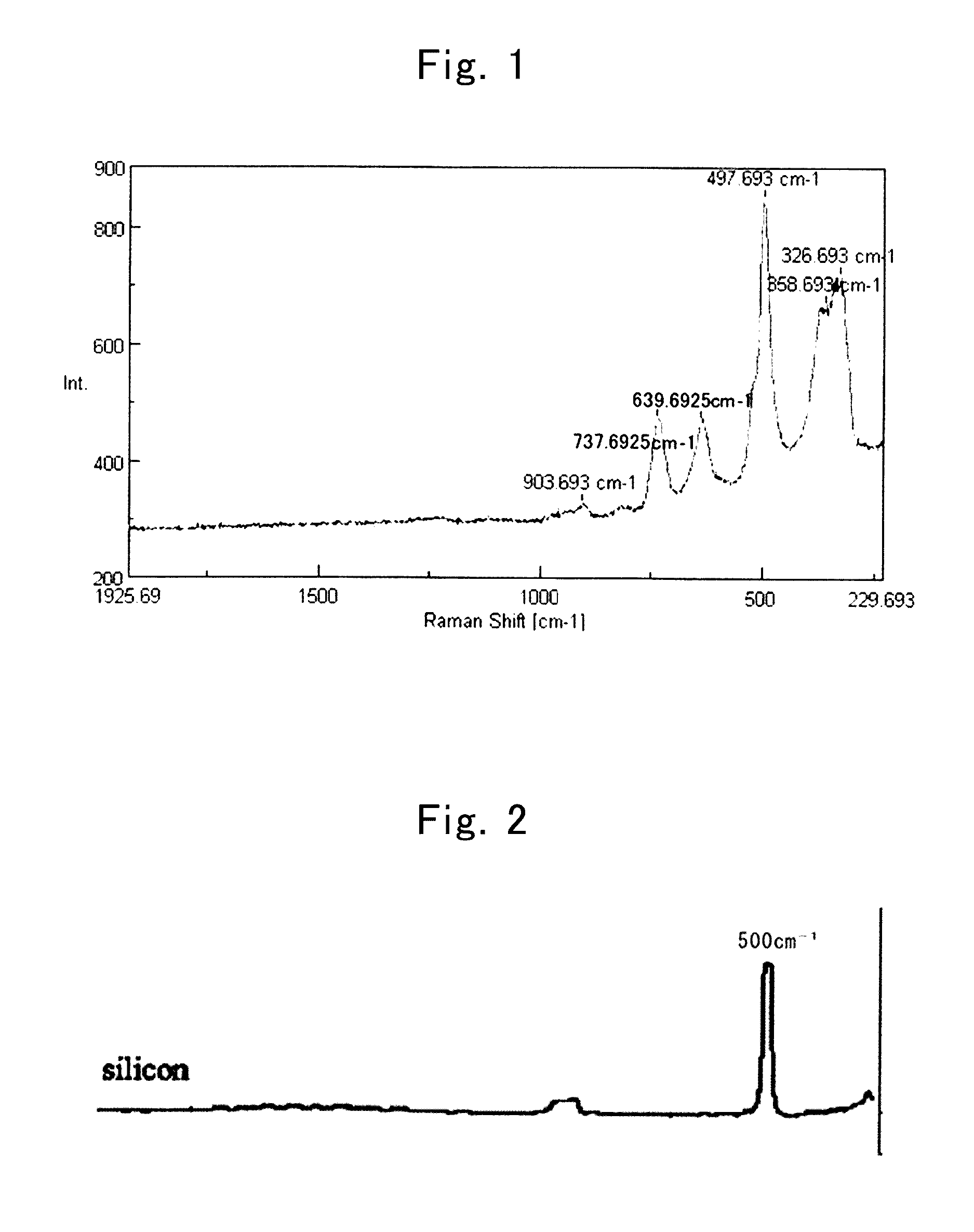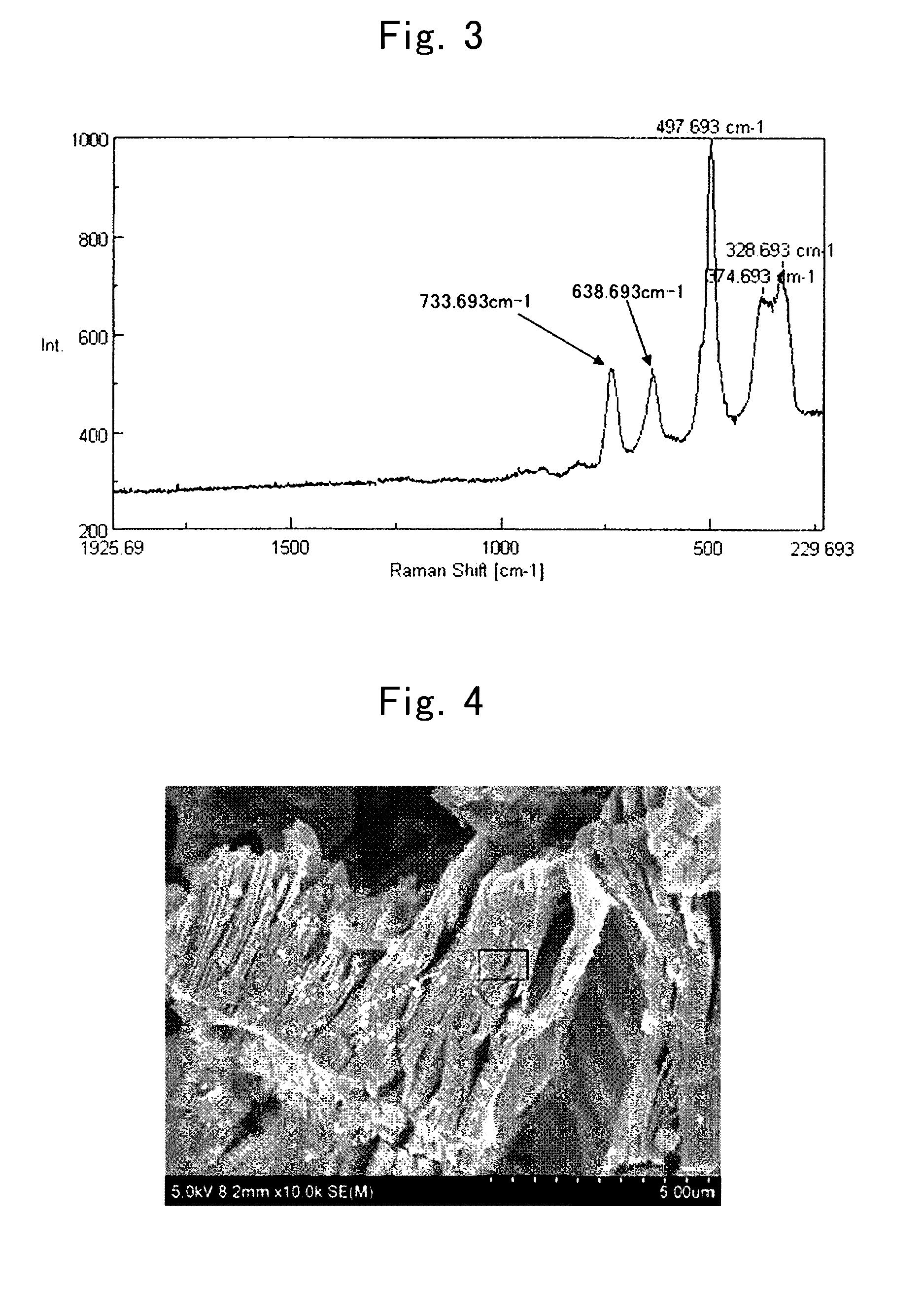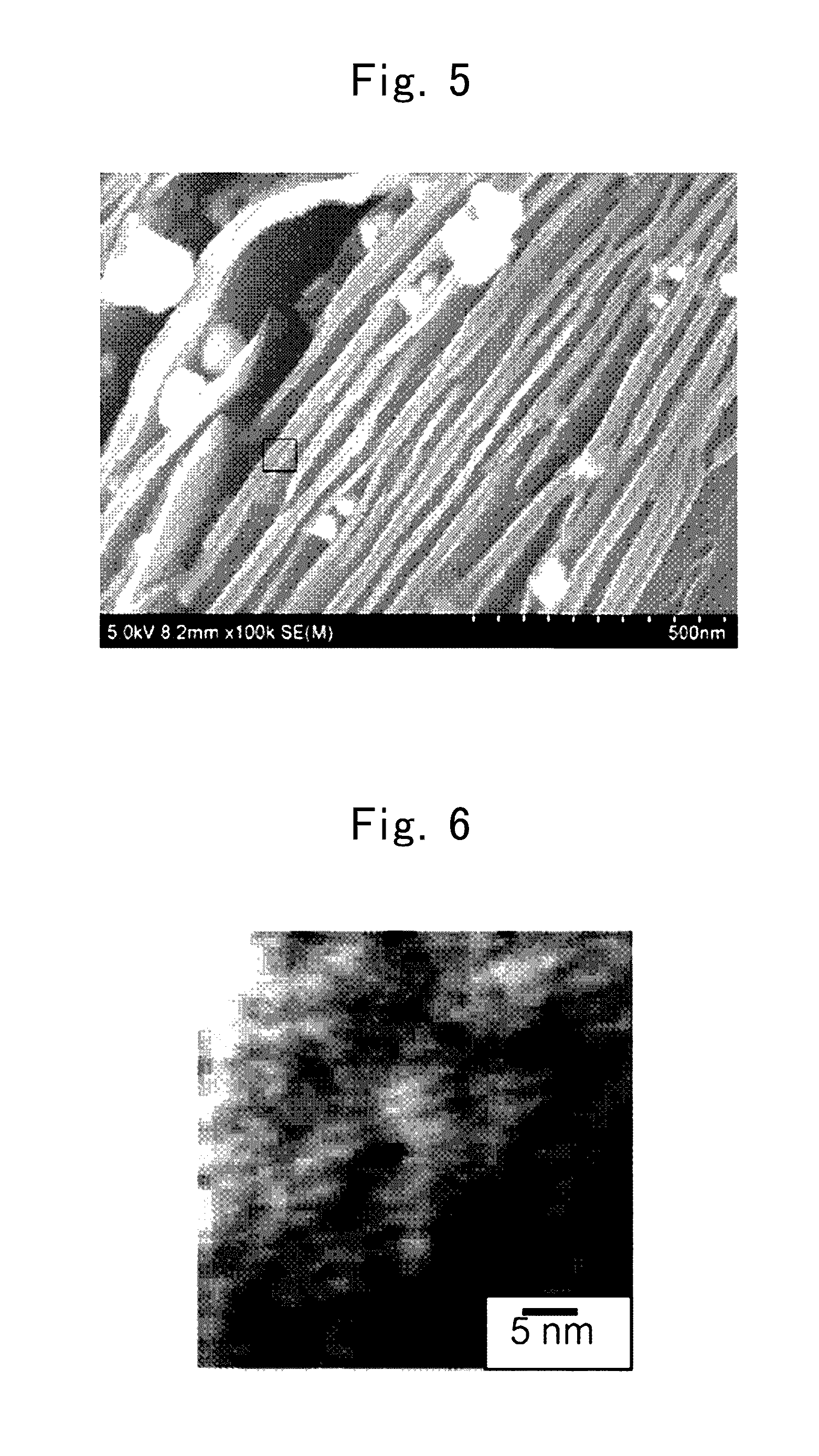Negative electrode for nonaqueous secondary battery and nonaqueous secondary battery, negative electrode active material and method for producing same, complex including NANO silicon, carbon layer, and cationic polymer layer, and method for producing complex formed of NANO silicon and carbon layer
a secondary battery and negative electrode technology, applied in the direction of batteries, cell components, electrochemical generators, etc., can solve the problems of large irreversible capacity consumed at the negative electrode, reduced capacity in a cycle test, and difficulty in achieving high capacity
- Summary
- Abstract
- Description
- Claims
- Application Information
AI Technical Summary
Benefits of technology
Problems solved by technology
Method used
Image
Examples
example 1
[0265]A mixed solution of 7 ml of an HF aqueous solution having a concentration of 46 mass % and 56 ml of an HCl aqueous solution having a concentration of 36 mass % was set to a temperature of 0° C. in an ice bath, and 3.3 g of calcium disilicide was added thereto and the mixed solution was stirred in an argon gas current. After completion of foaming was confirmed, the mixed solution was warmed to room temperature, further stirred for 2 hours at room temperature, had 20 ml of distilled water added thereto, and further stirred for 10 minutes. At this moment, suspension of a yellow powder was observed.
[0266]The obtained mixed solution was filtered, and the residue was rinsed with 10 ml of distilled water, rinsed with 10 ml of ethanol, and then vacuum dried to obtain 2.5 g of a layered polysilane. A Raman spectrum of that is shown in FIG. 3. Peaks of Raman shifts existed at 341±10 cm−1, 360±10 cm−1, 498±10 cm−1, 638±10 cm−1, and 734±10 cm−1.
[0267]Then, 1 g of the layered polysilane wa...
example 2
[0280]A negative electrode of Example 2 was formed similarly to Example 1 while using a slurry obtained by mixing 45 parts by mass of the Si / C complex I powder of Example 1, 40 parts by mass of the natural graphite powder, 5 parts by mass of acetylene black, and 33 parts by mass of the binder solution. A lithium ion secondary battery of Example 2 was obtained similarly to Example 1 while using the negative electrode of Example 2.
example 3
[0281]A negative electrode of Example 3 was formed similarly to Example 1 while using a slurry obtained by mixing 25 parts by mass of the Si / C complex I powder of Example 1, 60 parts by mass of the natural graphite powder, 5 parts by mass of acetylene black, and 33 parts by mass of the binder solution. A lithium ion secondary battery of Example 3 was obtained similarly to Example 1 while using the negative electrode of Example 3.
PUM
| Property | Measurement | Unit |
|---|---|---|
| thickness | aaaaa | aaaaa |
| mass % | aaaaa | aaaaa |
| mass % | aaaaa | aaaaa |
Abstract
Description
Claims
Application Information
 Login to view more
Login to view more - R&D Engineer
- R&D Manager
- IP Professional
- Industry Leading Data Capabilities
- Powerful AI technology
- Patent DNA Extraction
Browse by: Latest US Patents, China's latest patents, Technical Efficacy Thesaurus, Application Domain, Technology Topic.
© 2024 PatSnap. All rights reserved.Legal|Privacy policy|Modern Slavery Act Transparency Statement|Sitemap



